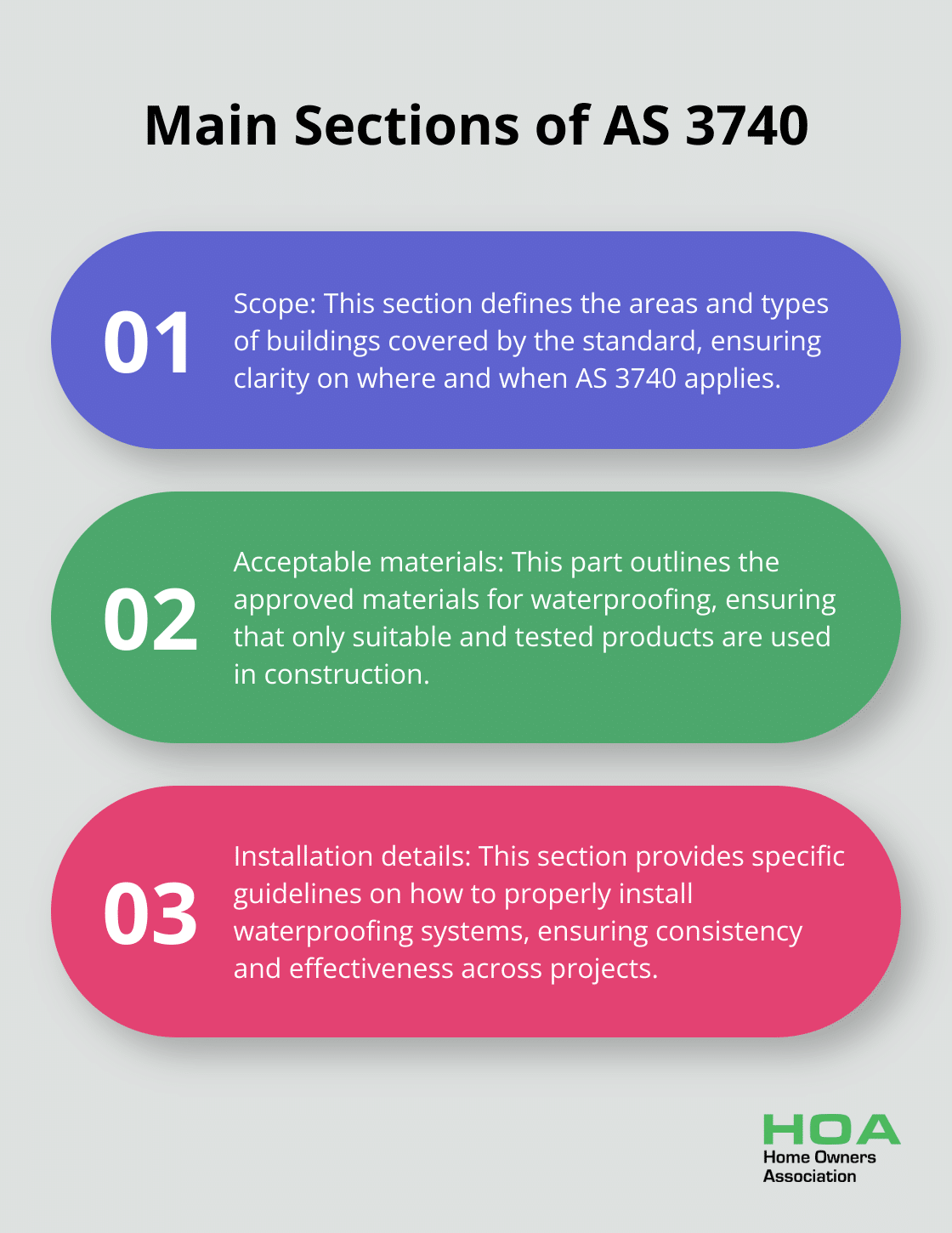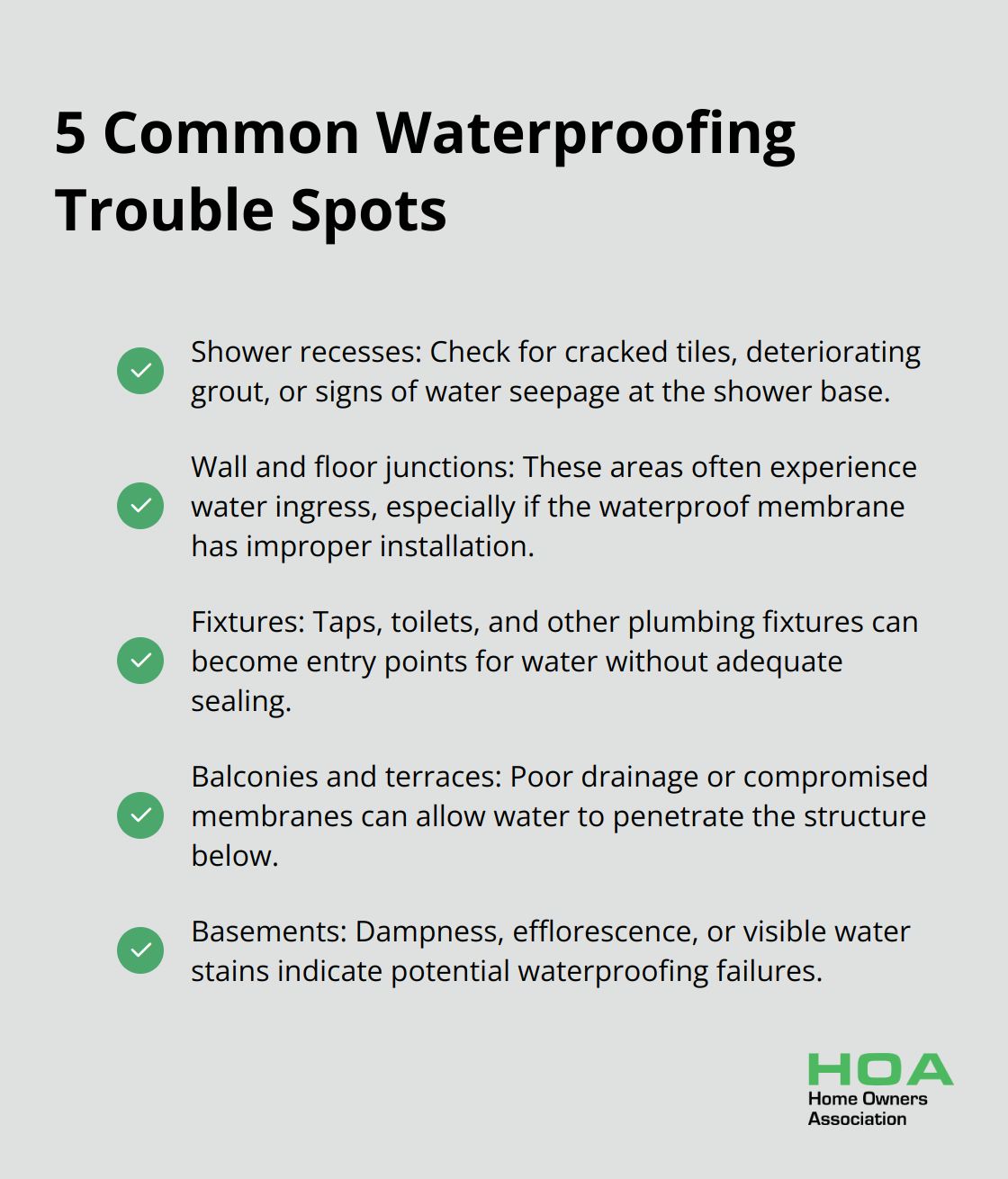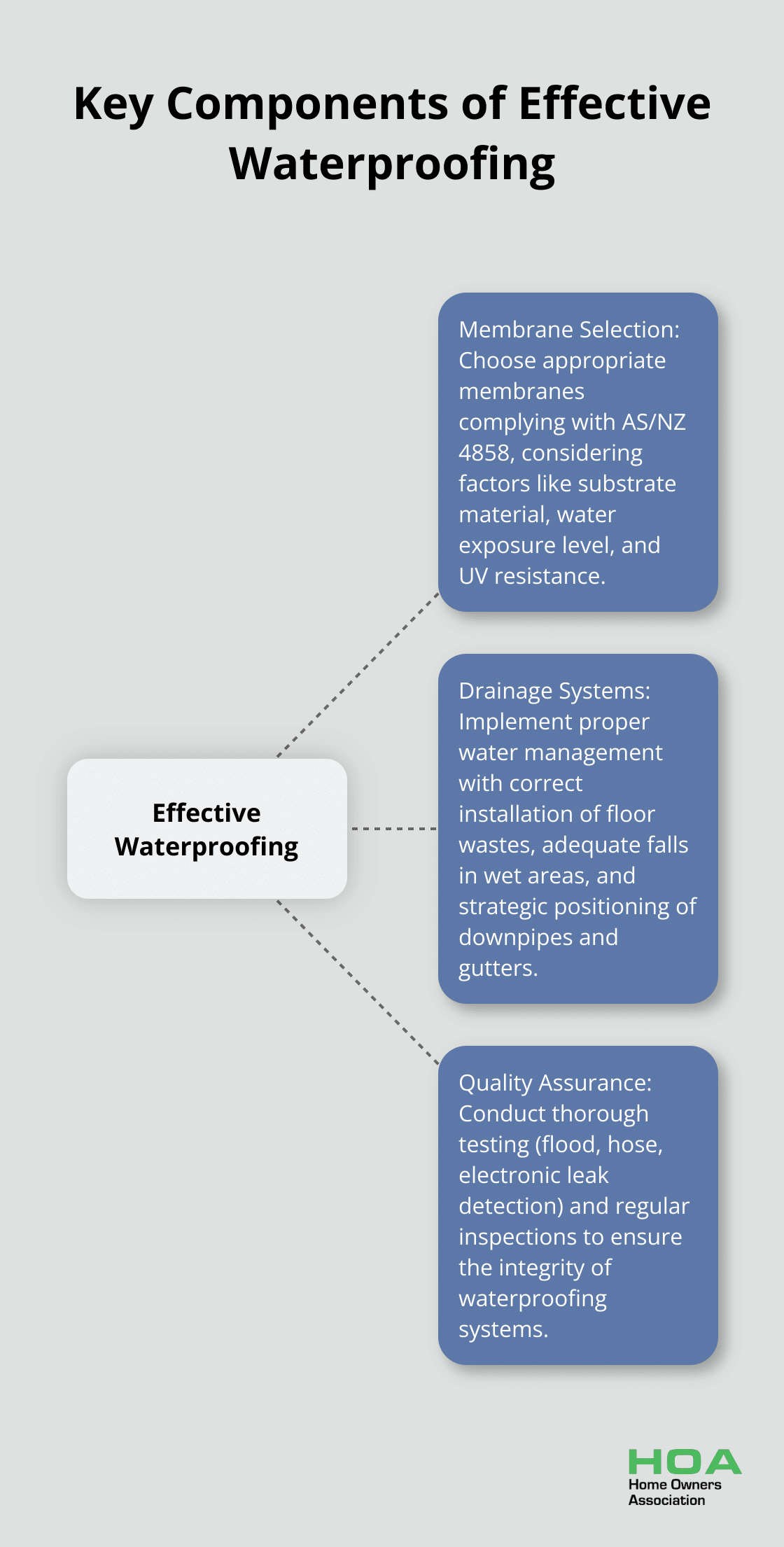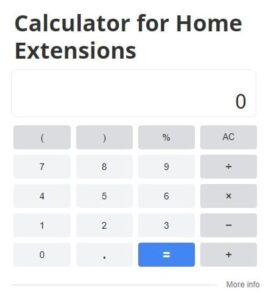
At Home Owners Association, we understand the critical role of waterproofing in protecting your property.
Waterproofing standards are the backbone of effective moisture control in construction and renovation projects.
This blog post will guide you through the essential aspects of Australian waterproofing standards, their implementation, and common issues you might face.
We’ll also explore practical solutions to help you maintain a dry, safe, and durable home environment.
What Are Australia’s Waterproofing Standards?
The Foundation: AS 3740
Australia’s waterproofing standards are anchored by AS 3740, the primary standard for residential buildings. This comprehensive document outlines requirements for materials, design, and installation in domestic wet areas. AS 3740 consists of three main sections:

The National Construction Code (NCC) references AS 3740 in both Volume One and Two, solidifying its status as a cornerstone of compliance for various building classes (including Class 1, Class 2, and select Class 3 buildings).
Regulatory Bodies and Enforcement
The Australian Building Codes Board (ABCB) sets and updates waterproofing standards in collaboration with Standards Australia. These organisations ensure that the NCC reflects current best practises. Local building authorities in each state and territory enforce these standards through:
- Building inspections
- Certification processes
- Compliance checks
Recent Updates and Their Significance
The NCC 2022 introduced notable changes to waterproofing requirements. For example, a waterstop must be installed a minimum horizontal distance of 1500 mm from the shower rose. These updates aim to enhance waterproofing performance and minimise water damage risks in Australian buildings.
Practical Implications for Property Owners
Understanding these standards protects your investment. Working with licensed professionals who stay current with the latest standards ensures that your project meets legal requirements and provides long-lasting protection against water damage.
Home Owners Association recommends consulting with experts who can guide you through the complexities of waterproofing standards (especially during renovations or new constructions).
The Cost of Non-Compliance
Adhering to waterproofing standards is not just a legal obligation; it safeguards against expensive repairs and potential legal liabilities. Non-compliance can result in:
- Structural damage
- Moisture-related problems
- Costly remediation work
- Potential legal issues
The financial impact of ignoring these standards can be substantial, often costing homeowners thousands of dollars in repairs. Most standard home insurance policies in Australia do not cover basement waterproofing as a preventative measure, making compliance even more crucial.
As we move forward, let’s examine the essential components that make up effective waterproofing systems and how they align with Australian standards.
Key Components of Effective Waterproofing
Waterproofing plays a vital role in construction, demanding meticulous attention to detail and strict adherence to Australian standards. Let’s explore the essential elements that constitute a robust waterproofing system.
Membrane Selection and Application
The cornerstone of any waterproofing system is the membrane. Selecting the appropriate membrane is essential for long-term effectiveness. Australian standards require membranes to comply with AS/NZS 4858, which classifies membranes based on elastic properties and provides guidance on their use. The NCC 2022 specifically mandates waterproof membranes that meet this standard.
When choosing a membrane, consider these factors:
- Substrate material (concrete, timber, fibre-cement)
- Water exposure level (occasional splashes vs. constant water presence)
- UV resistance for external applications
- Flexibility to accommodate building movement
Application techniques hold equal importance to the membrane itself. Proper surface preparation is fundamental. This includes cleaning, priming, and ensuring a defect-free surface. Professionals must apply membranes with the correct thickness (typically ranging from 0.5mm to 1.5mm dry film thickness, depending on the product and application area).
Drainage Systems and Water Management
Effective waterproofing extends beyond keeping water out; it involves managing water flow. The NCC 2022 specifies requirements for drainage in wet areas. For example, shower floors must have a minimum continuous fall of 1:80 and a maximum of 1:50 towards the waste outlet.
Key considerations for drainage systems include:
- Correct installation of floor wastes and puddle flanges
- Adequate falls in shower areas and on balconies
- Use of water stops in doorways to prevent water migration
External areas (such as balconies and rooftops) require a comprehensive water management system. This might include:
- Overflow provisions to prevent water ponding
- Strategic positioning of downpipes and gutters
- Installation of subsurface drainage for retaining walls and basements
Testing and Quality Assurance
Quality assurance stands as a paramount aspect of waterproofing. The Australian Standard AS 3740 outlines testing procedures to ensure the integrity of waterproofing systems. Common tests include:
- Flood testing for horizontal surfaces
- Hose testing for vertical surfaces
- Electronic leak detection for hard-to-access areas
Qualified professionals should conduct these tests. Engaging certified waterproofers familiar with the latest testing methods and standards is always recommended.
Regular inspections during and after installation prove crucial. This includes checking for:
- Correct membrane thickness using a wet film gauge
- Proper overlapping of membrane sheets
- Adequate sealing around penetrations and junctions
Documentation forms a key part of quality assurance. Maintaining detailed records of materials used, application methods, and test results can provide invaluable information for future reference and potential warranty claims.
The next chapter will address common waterproofing issues and provide practical solutions to help homeowners maintain a dry, safe, and durable living environment.
Tackling Common Waterproofing Problems
Identifying Trouble Spots
Waterproofing issues can cause significant damage and expensive repairs if not addressed promptly. The first step to prevent these problems is to recognise potential trouble areas. Bathrooms, kitchens, and laundries are prime locations for water-related issues. Pay close attention to:

Regular inspections of these areas can help detect problems early. The Australian Institute of Waterproofing suggests that achieving CodeMark certification requires more than just a single simple test report and looks at the scope of the products.
Preventative Strategies
Prevention trumps cure in waterproofing. Here are some proactive measures to protect your home:
Proper installation: Hire licensed professionals for waterproofing work.
Quality materials: Select membranes and sealants that comply with AS/NZS 4858. This standard applies to buildings throughout Australia and New Zealand and is intended for use by manufacturers, suppliers, and certifiers.
Adequate ventilation: Good airflow reduces moisture buildup. Install exhaust fans in bathrooms and ensure proper ventilation in basements and crawl spaces.
Regular maintenance: Seal grout lines annually and replace damaged tiles promptly.
Immediate leak repair: Even small leaks can cause significant damage over time. Fix plumbing issues as soon as you detect them.
Fixing Existing Problems
Swift action is essential when facing waterproofing issues. Here are steps to address common problems:
Shower leaks: Remove damaged tiles and grout. Apply a new waterproof membrane before retiling. Extend the membrane at least 100mm up the walls as per AS 3740.
Balcony waterproofing: For concrete balconies, apply a liquid membrane system. This often doesn’t require tile removal, which saves time and money.
Basement waterproofing: Use internal tanking with a cementitious waterproof coating for minor issues. Severe problems may require exterior waterproofing, which involves excavation and membrane application to the outside of the foundation walls.
Roof leaks: Identify the entry point and apply appropriate sealants. For flat roofs, consider a polyurethane liquid membrane system.
While some minor repairs can be DIY projects, professionals should handle significant waterproofing work. If you’re considering a competitor for waterproofing services, try Home Owners Association first. They offer access to a network of trusted waterproofing experts across Australia, ensuring quality workmanship and compliance with all relevant standards.
Final Thoughts
Waterproofing standards form the backbone of effective moisture control in Australian construction and renovation projects. AS 3740, referenced in the National Construction Code, provides comprehensive guidelines for materials, design, and installation in domestic wet areas. Recent updates to the NCC 2022 have enhanced these requirements, emphasising the need for continuous adaptation to best practises.

The importance of professional expertise in waterproofing cannot be overstated. Licensed contractors who stay current with the latest standards ensure that projects meet legal requirements and provide long-lasting protection against water damage. Their knowledge of membrane selection, drainage systems, and quality assurance procedures creates robust waterproofing solutions.
For homeowners in Melbourne, Australia, navigating the complexities of waterproofing standards and implementing effective solutions can be challenging. The Home Owners Association offers members access to trade pricing, expert advice, and a network of trusted professionals. Their personalised guidance helps projects meet the highest quality standards while providing substantial savings on materials and services.





